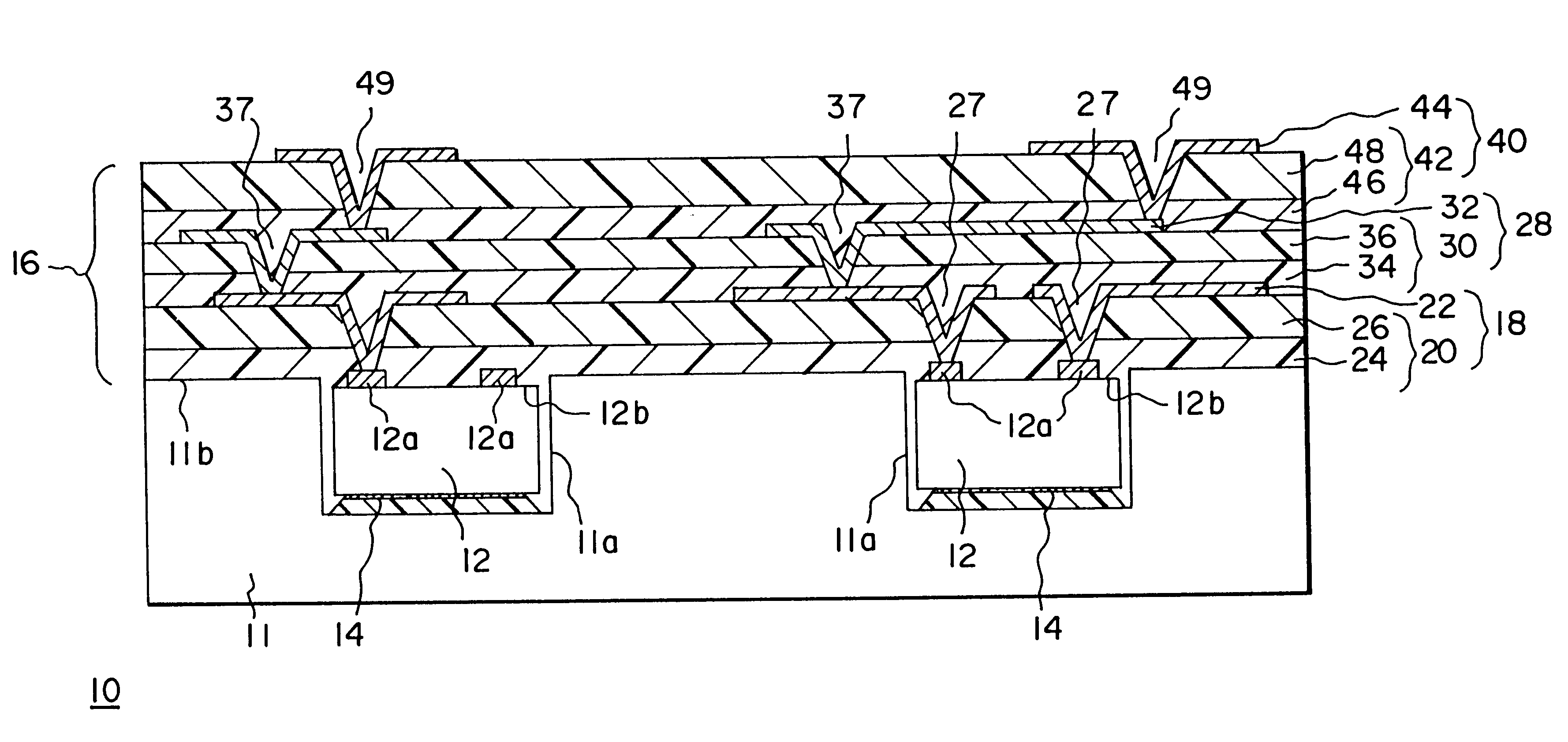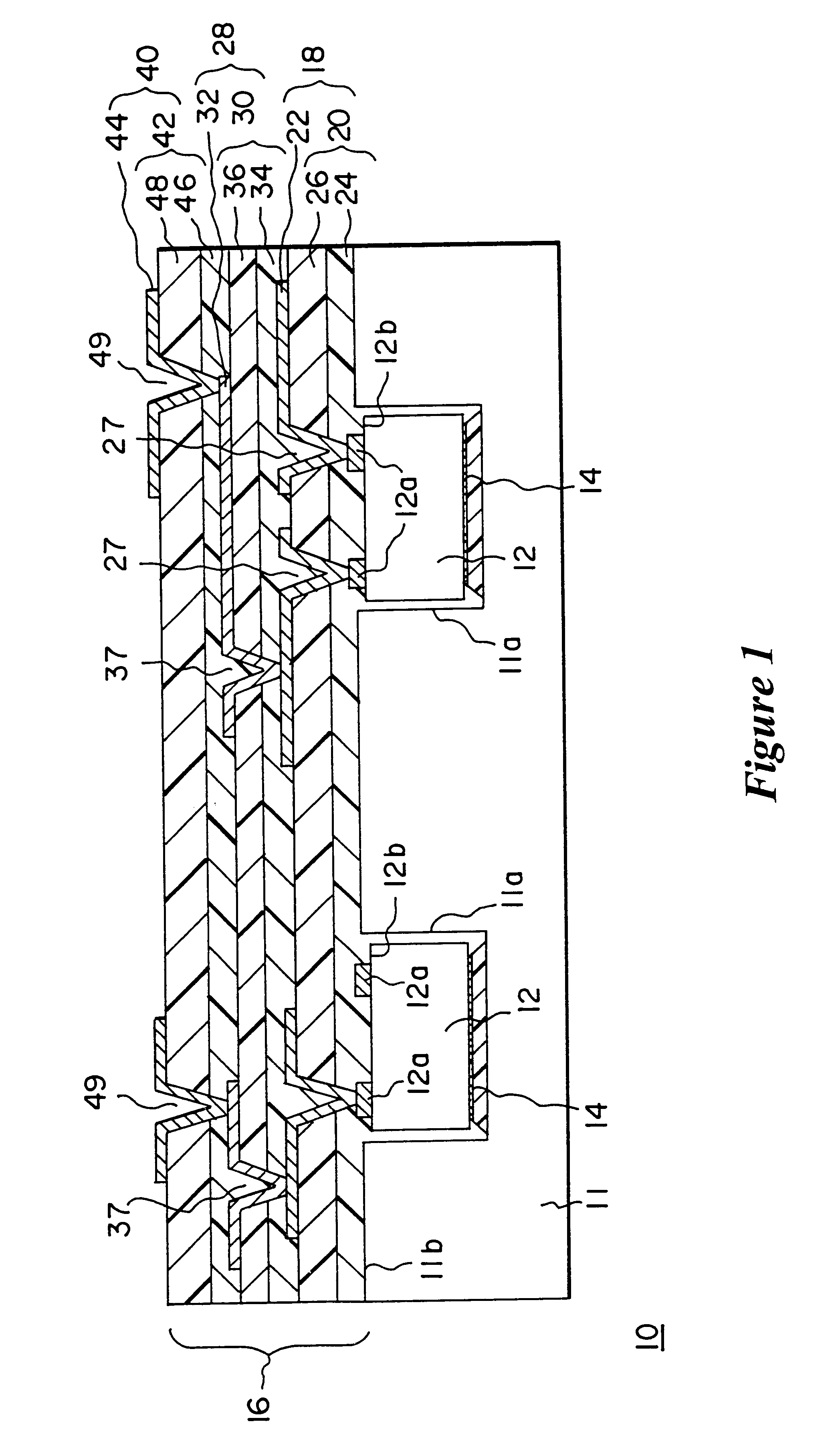Electronics module having high density interconnect structures incorporating an improved dielectric lamination adhesive
- Summary
- Abstract
- Description
- Claims
- Application Information
AI Technical Summary
Benefits of technology
Problems solved by technology
Method used
Image
Examples
example 2
We have demonstrated that the adhesion of "KAPTON.RTM." polyimide films to substrates with BCB as a laminate adhesive is dependent on the lamination time and temperature. For these bond tests, the "KAPTON.RTM." polyimide film was given a standard oxygen RIE treatment and was coated with a thin layer of adhesion promoter before the BCB polymer was spin coated from a commercially available solution. The structure was then baked for 1 / 2 hour at 100.degree. C., and for 1 / 2 hr at 150.degree. C. to leave a 12 micron thick film. From the results of these tests, shown in Table 2, the minimum time and temperature for good adhesion of the polyimide to other materials was shown to be dependent on temperature and time.
To provide adequate bonding, the temperature should be at least 190.degree. C., and the dwell time at this temperature should be at least 2 hours. However, at higher temperatures, shorter dwell times could be used. For example, a lamination at 230.degree. C. gave good adhesion aft...
example 3
Illustratively, benzocyclobutene can be used as a laminate adhesive by coating BCB on a suitable film material, baking the polymer to B-stage, and then laminating over the desired structure. Specifically, the BCB polymer is supplied as a 57% solution in mesitylene. A 1 mil thick film of "KAPTON E.RTM." polyimide is mounted securely on an 8 inch frame. The frame is cleaned and coated with a silane coupling agent prior to being coated with the adhesive. The frame is placed on a spin coater and the BCB solution dispensed and spun to produce a 12 micron thick adhesive layer (after baking). The baking cycle is 15 minutes at 100.degree. C. followed by 1 hour at 180.degree. C. Laminations are completed using a Carver press modified to deliver pressure and vacuum. "KAPTON.RTM." polyimide sheets are placed on the bottom tray with slits to provide vacuum. The samples are placed face up in the center of the tray, and the frame (with the BCB adhesive) is placed face down onto the sample. The "l...
PUM
| Property | Measurement | Unit |
|---|---|---|
| Thickness | aaaaa | aaaaa |
| Thickness | aaaaa | aaaaa |
| Thickness | aaaaa | aaaaa |
Abstract
Description
Claims
Application Information
 Login to View More
Login to View More - R&D
- Intellectual Property
- Life Sciences
- Materials
- Tech Scout
- Unparalleled Data Quality
- Higher Quality Content
- 60% Fewer Hallucinations
Browse by: Latest US Patents, China's latest patents, Technical Efficacy Thesaurus, Application Domain, Technology Topic, Popular Technical Reports.
© 2025 PatSnap. All rights reserved.Legal|Privacy policy|Modern Slavery Act Transparency Statement|Sitemap|About US| Contact US: help@patsnap.com


